I'm trying to figure out the best way to define a von-Mises distribution wrapped on a half-circle (I'm using it to draw directionless lines at different concentrations). I'm currently using SciPy's vonmises.rvs(). Essentially, I want to be able to put in, say, a mean orientation of pi/2 and have the distribution truncated to no more than pi/2 either side.
I could use a truncated normal distribution, but I will lose the wrapping of the von-mises (say if I want a mean orientation of 0)
I've seen this done in research papers looking at mapping fibre orientations, but I can't figure out how to implement it (in python). I'm a bit stuck on where to start.
If my von Mesis is defined as (from numpy.vonmises):
np.exp(kappa*np.cos(x-mu))/(2*np.pi*i0(kappa))
with:
mu, kappa = 0, 4.0
x = np.linspace(-np.pi, np.pi, num=51)
How would I alter it to use a wrap around a half-circle instead?
Could anyone with some experience with this offer some guidance?

